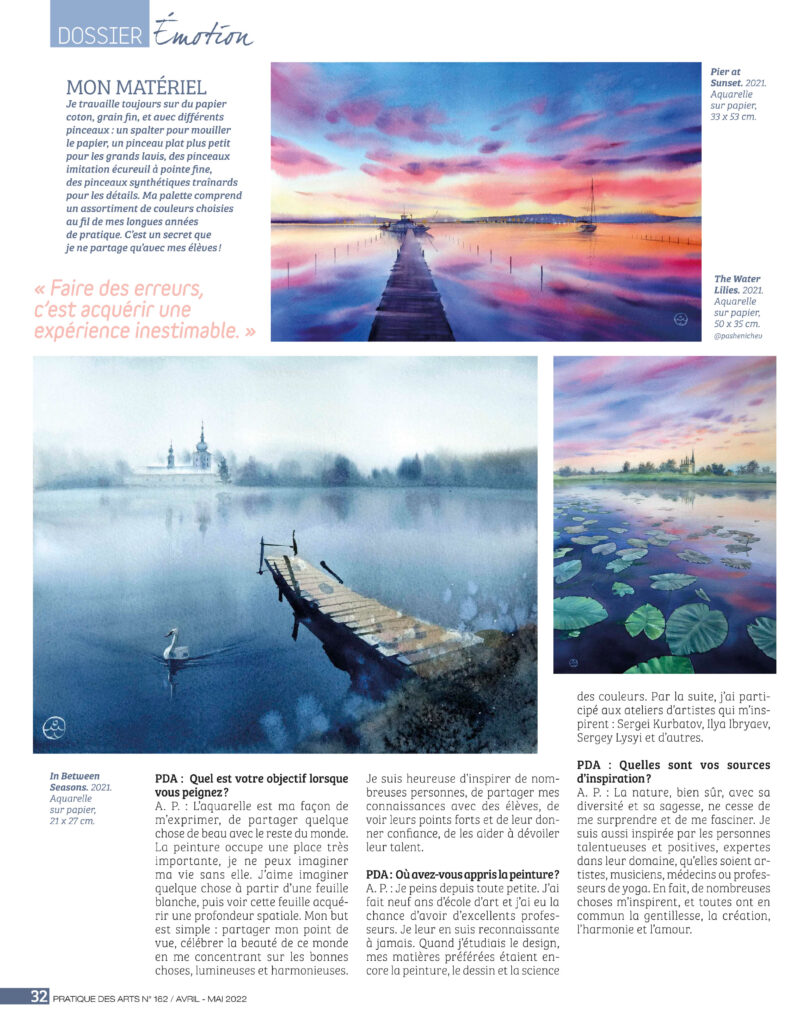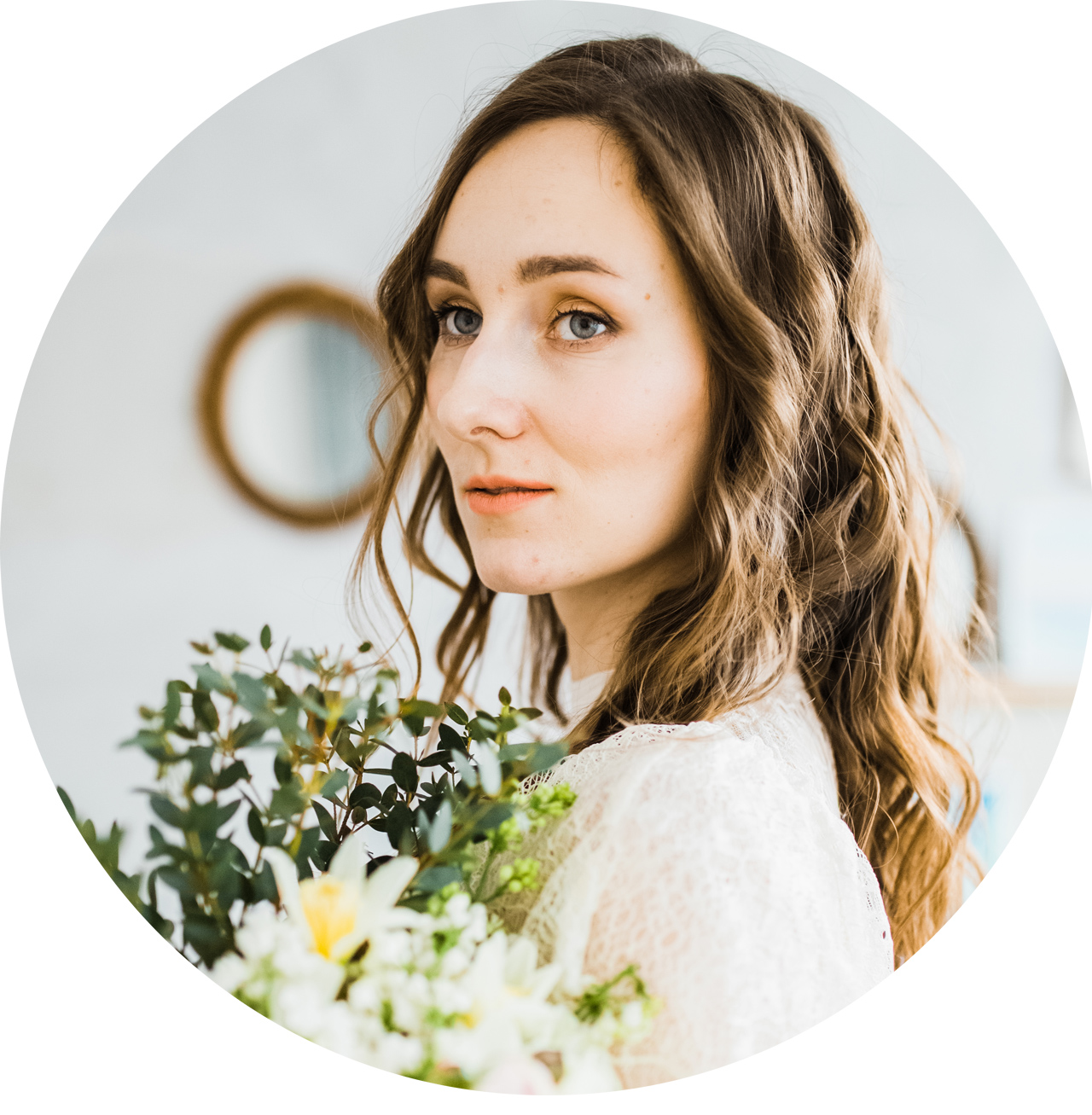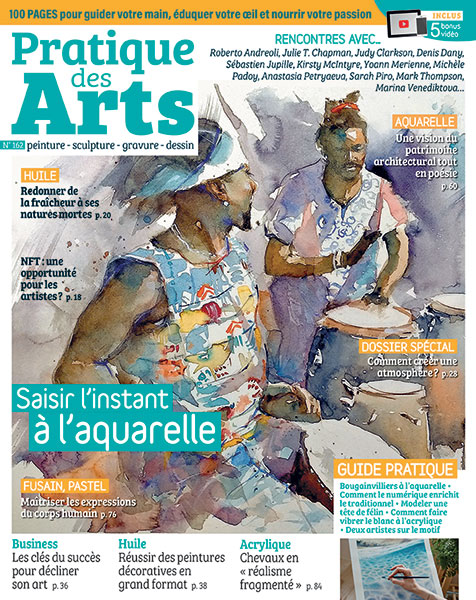
Pratique des Arts 162 - Comment saisir l'instant
This spring issue invites you to pick up the brushes and wander according to inspiration: 100 pages to guide your hand and nourish your artistic passion, to practice painting, sculpture, drawing and engraving.
I am a watercolor artist from Russia. In 2013 I graduated from the Ural State Architectural Art Academy. Currently I live in Yekaterinburg with my husband and son. I have worked as a graphic designer and interface designer for several years. Now I’m a fulltime artist.
I am a participant and winner of Russian and international exhibitions. I am also the author of several training video courses on watercolor: “Watercolor Basics”, “Secrets of Water”, “Transparency” and others which have got many rave reviews from students from all over the world.

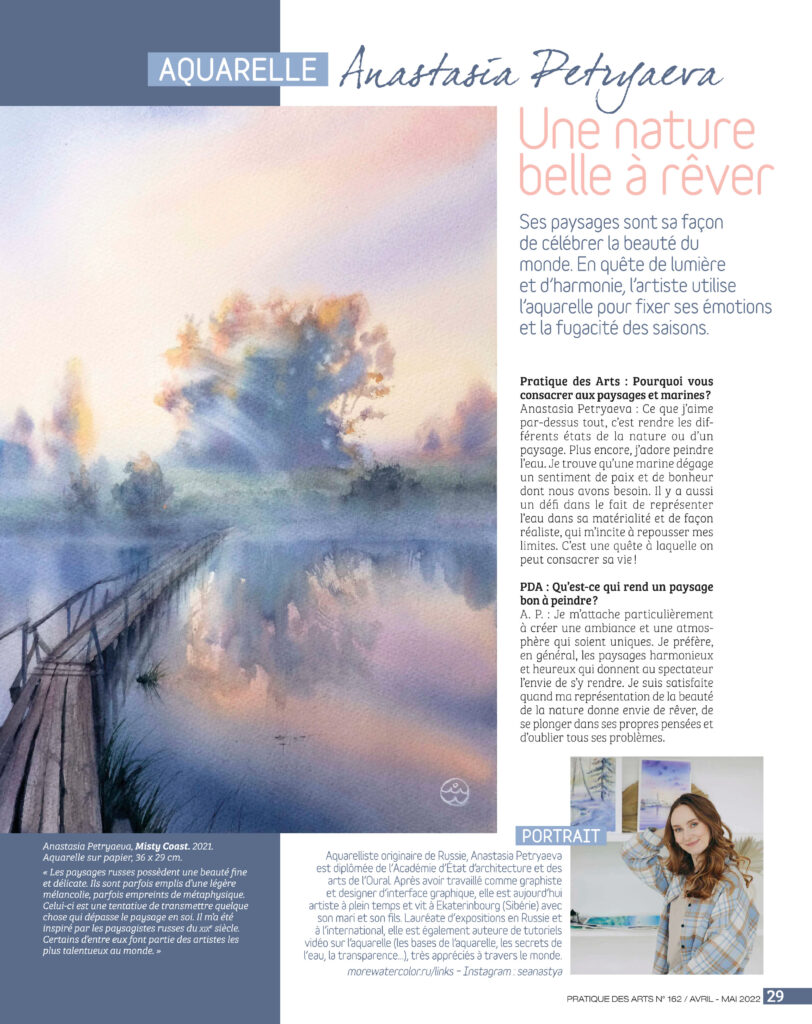
1
- What do you like in painting Nature: landscapes and seascapes?
My favorite topic is the image of the states of nature, the landscapes. I especially like to paint water. I love the kind of peace and happiness that the image of water gives. It’s also a challenge for me that consists of picturing the materiality of water and refining my skills in order to reach realistic image. It’s something you can aspire to your whole life.
2
- What are your favorite spots for landscapes and seascapes and why?
What I like most is to create a unique mood and atmosphere in a landscape. I usually prefer harmonious and happy scenery that would make the viewer want to be there and enjoy the beauty of nature, dream, immerse themselves in their own thoughts and forget about problems.
3
- Why the choice of watercolor?
At the moment watercolor is my favorite medium. It all started with the fact that watercolor doesn’t require a lot of space or any special space planning, unlike oil, for example. All I have to do in order to start working is to open a watercolor set, pour some water and get the brushes. Also watercolor is a very dynamic and quick medium that requires courage and flexibility in emerging circumstances that don’t always go according to plan. But it makes it all the more interesting and watercolor improves mental flexibility.
I think that watercolor reflects the spirit of our time, events and emotions change fast and you have to hurry to picture them while they are relevant. Additionally, watercolor isn’t so monumental, you don’t have to spend years painting a piece, you can finish a work in an hour or two or spend many hours working on it depending on your preferences.
4
- Your creative process: the main steps of creation of a painting. Please talk about your technic.
Work on a painting usually starts with choosing a plot and a photo reference. I always pick them according to my mood and my current state, the plot must inspire me 100%, otherwise I simply won’t start it. Before I start painting, I believe that this particular plot will be the best one, that I’ll put all my skill and potential in it. It’s not about high hopes, it’s more about positive approach to work and belief that even if something doesn’t go as planned, it’ll turn out the best possible way anyway. I sometimes do an investigatory sketch, but more often I start working on a big sheet right away. The stages of work depend on the plot. The tactics of work is very important in watercolor, that’s why I always think it through before I start painting. I try to work following the top-down, or in other words general-to-specific approach: I first place major color and tone relations and then add details.
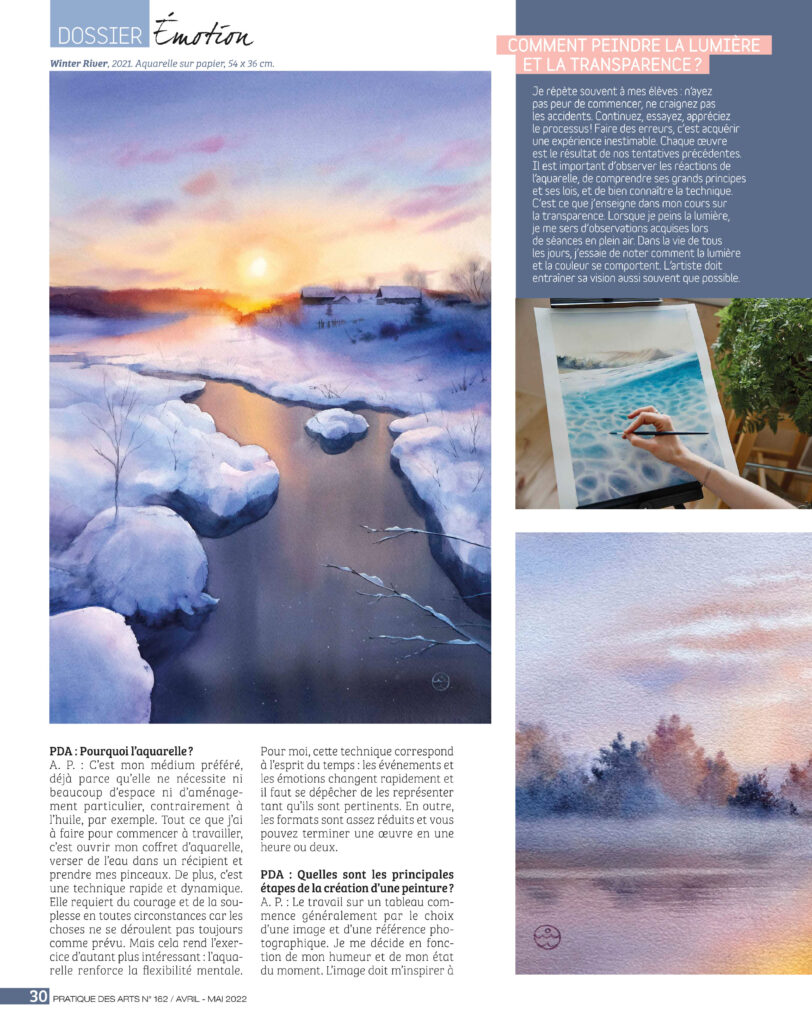
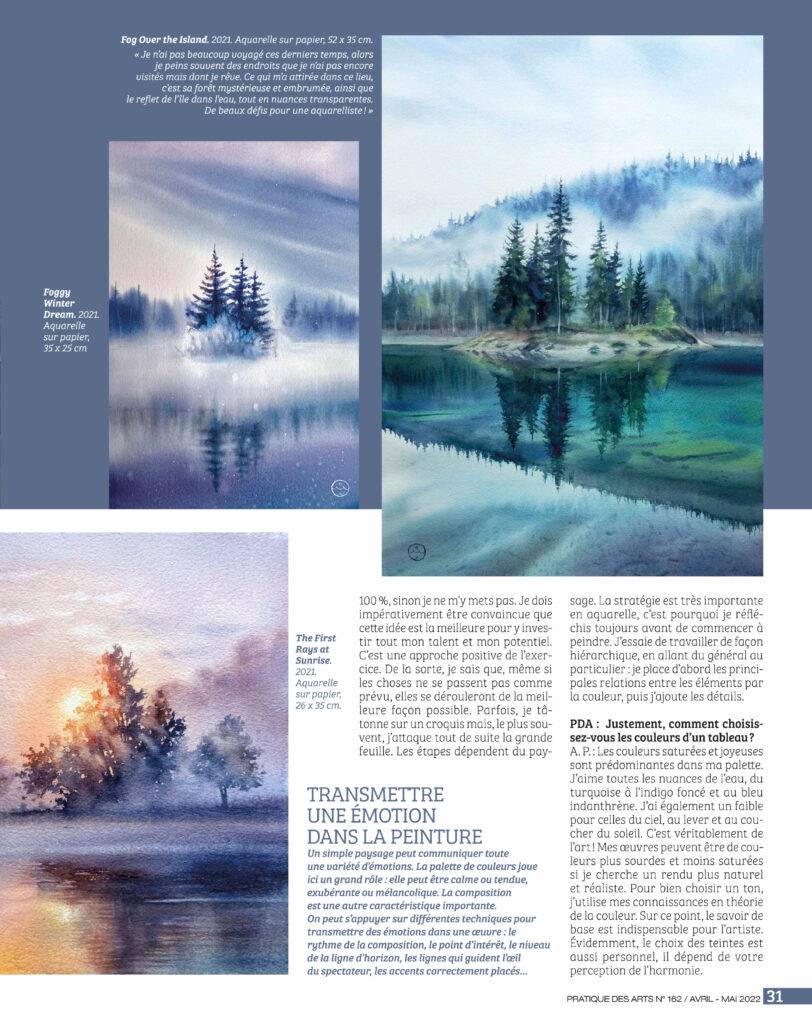
5
- The choice of colors: what are your favorite colors? How do you choose them for a painting?
Saturated and cheerful colors prevail in my palette. I love all the shades of water from turquoise to dark indigo and indathrone blue, and I also have a soft spot for all the colors of sunrise and sunset sky. This is real art! My works are becoming more muted in color and not as saturated because I now seek more natural and realistic image. When choosing a color, I use my color science knowledge, I think that basic knowledge and academic education are very important for an artist. And, of course, choice of colors depends on individual perception of color harmony.
6
- How to transmit emotion in your paintings?
Even a landscape allows to transmit a variety of emotions. Color scheme plays a great role here: it can be calm or tense, exuberant or melancholic. Composition is another important feature. There are various techniques of transmitting certain emotions in works: rhythm, placement of the compositional centre, the level of the horizon line and lines that lead the viewer’s eye, correctly placed accents.
7
- What is the most important for you when you paint? Your aim?
Watercolor is my way of self-expression, I feel that I can share something beautiful with the world. Painting is an important part in my life, I could even say I can’t imagine my life without it. I love the very process of picturing something on a blank white sheet, I love to watch this flat sheet acquire space depth. My aim is to simply share my outlook, celebrate the beauty of this world focusing on the good, bright and harmonious things. I’m happy that I can inspire a lot of people, share my knowledge with the students, see their strengths and make them feel confident, help them unveil their talent.
8
- Where did you learn painting?
I have been learning to paint since I was little. My education includes 9 years of art school, I was really lucky to have the teachers that I had. My art teacher was a great artist, he is absent in body but present in soul and I’ll be grateful to him forever. Next, I graduated from an art university, I studied design there, but my favorite subjects were painting, drawing and color science. Later I studied and participated in workshops of the artists who inspire me, Sergey Kurbatov, Ilya Ibryaev, Sergey Lysyi and others.
9
- Your tips (advices) for Pratique des arts readers: how to paint water? transparency? light?
My major tip to the students is – don’t be afraid to start, don’t be afraid that something may go wrong. Keep trying, enjoy the process. When we make mistakes, we acquire invaluable experience. Our every work is the result of all our previous attempts. As for painting water, it’s important to observe things a lot, try to understand the main principles and laws just like in physics, know watercolor techniques well. That’s exactly what I teach in my Transparency course. When I paint light, I also use my observations from plein-air sessions, and in everyday life I try to note how light and color behave. This artist’s vision can and should be trained.
10
- What inspires you?
Nature inspires me, of course, its diversity and wisdom never cease to surprise and fascinate me. I’m also inspired by enthusiastic talented people, professionals in their field, and it doesn’t matter whether they are artists or musicians, doctors or yoga teachers. Actually, there are many things that inspire me, but what they all have in common is kindness, creation, harmony and love.
11
- Which materials do you use for your painting? Colors, brushes, paper, etc.
I always use grain fin cold pressed cotton paper, brushes of various brands that always include a wide flat brush for wetting the paper, a smaller flat brush for big washes, squirrel imitation brushes with fine tip, synthetic rigger brushes for detailing. See the photo. My palette has roughly the same set of colors that I have picked during my long years of practice, but let me keep my set of colors a secret that I only share with my students.
